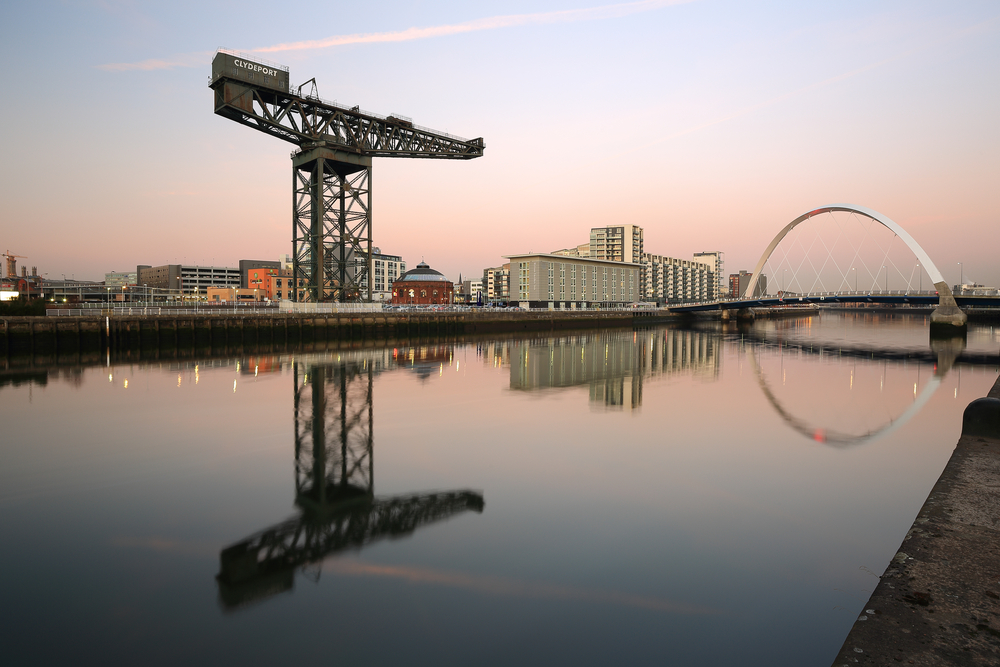
A giant cantilever crane looms over a car park adjacent to the Hilton Garden Inn at Glasgow City. During its heydays, this crane used to load cargo and steam locomotives onto waiting ships to be exported around the world. The crane is no longer operational, yet its arm still bears the name of its former owners—Clydeport.
Known as the Finnieston Crane, it is one of only four such cranes still standing on the River Clyde, upon which Glasgow is built. They are the cherished symbols of the city's engineering heritage.
Shipbuilding was once a huge industry in Scotland, and the heart of this industry was situated on the banks of River Clyde. Within a short stretch of about thirty kilometers along the Clyde, dozens of different shipbuilding yards operated employing tens of thousands of workers who made some of the world’s fastest, biggest and most beautiful ships. In the early 1900s, one out of every five ships launched was built on the River Clyde. Shipbuilding was the pride of Scotland, and the envy of the world.
The first boats were built on the Clyde probably as early as the 15th century, but it wasn’t until the Industrial Revolution had begun that shipbuilding became a real source of commerce for Glasgow. Back then, conditions on River Clyde were not exactly conducive to shipbuilding. It was wide and shallow, and at places the depth was as little as two feet at low tide. This hampered Glasgow's ambitions to become a port, which prompted the City Council to buy land closer to the sea and build their own port. This town became Port Glasgow, and for a while it was the main customs port for the Clyde.
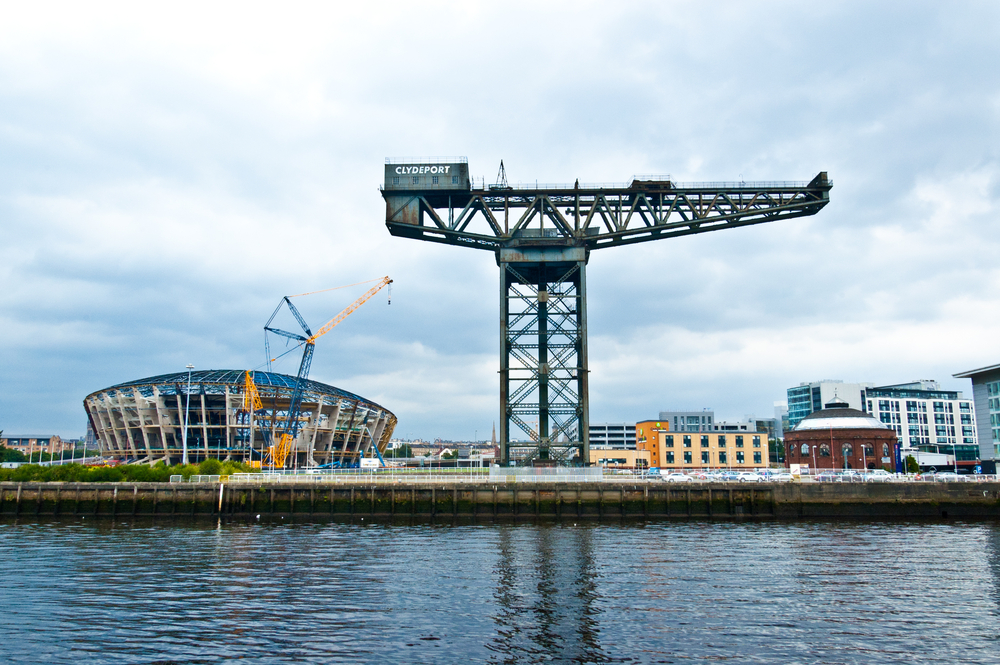
The Finnieston crane, Glasgow. Photo credit: DrimaFilm/Shutterstock.com
In the late 18th century, a number of extensive river engineering projects were undertaken to dredge and deepen River Clyde as far as Glasgow. As soon as this work was completed, a number of shipbuilding companies rapidly establishing themselves on the river. Soon, the Clyde gained a reputation for being the best location for shipbuilding in the British Empire, and grew to become the world's pre-eminent shipbuilding center. Clydebuilt became an industry benchmark of quality, and the river's shipyards were given contracts for prestigious ocean-going liners, as well as warships, including the Queen Mary and the Queen Elizabeth 2— the largest passenger liner of the time.
At the Fairfield yard in Govan, the largest crane in the world, with a maximum lift capacity of 250 tons, was erected in 1911, and by the following year, Fairfield had 12 ships under construction at the same time. During the two World Wars, the shipbuilders of the Clyde became the leading suppliers of the Royal Navy.
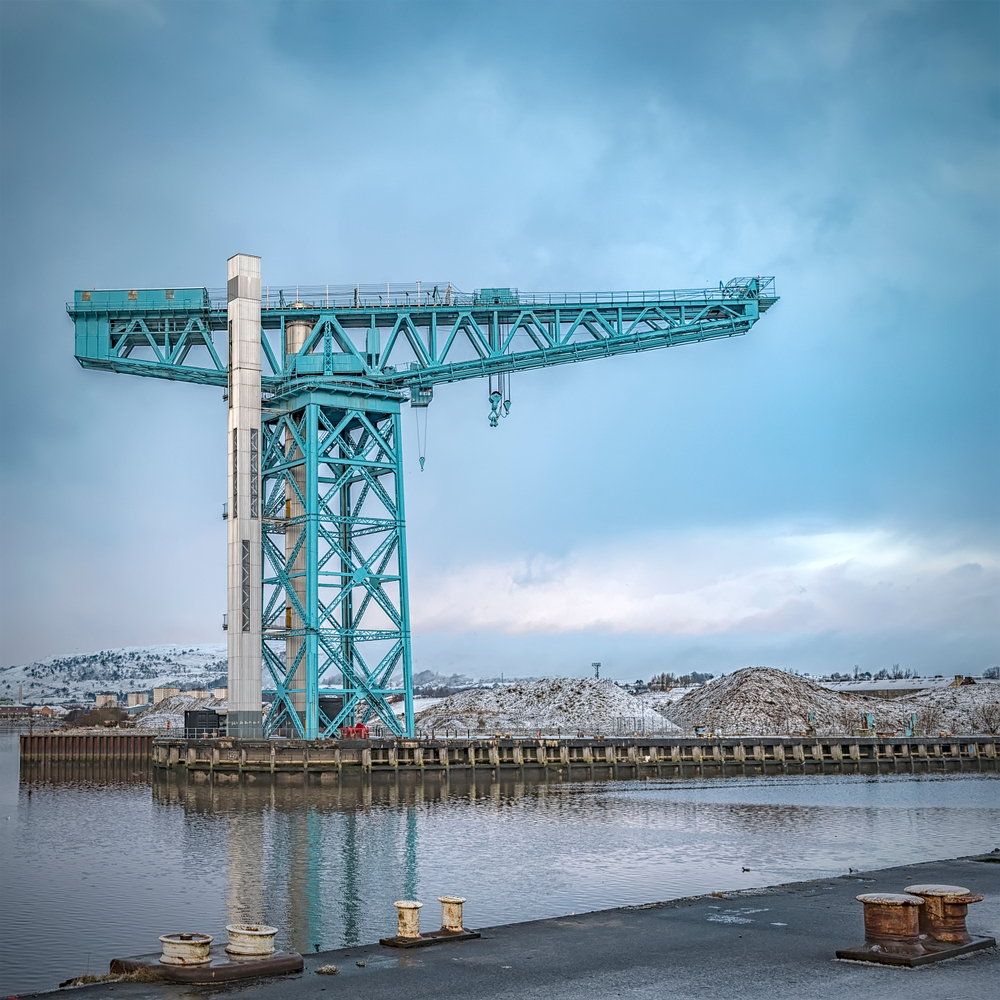
The 150-foot-high Titan crane at Clydebank, was also the world's first electrically powered cantilever crane, and the largest crane of its type at the time of its completion. Photo credit: Antony McAulay/Shutterstock.com
Clyde’s downfall as a major industrial center came during and after World War II. The shipyards suffered heavy damages by enemy bombing, and immediately after the war the number of orders fell drastically. Glasgow’s shipyards were also forced to compete with a number of emerging ship building nations as the heart of the industry shifted to Asia. By the mid-1960s, shipbuilding on the Clyde was becoming increasingly uneconomical and by the 1970s, it was practically over.
Only a handful of shipyards remain in operation on the Clyde today. Two of these are major shipyards owned by a naval defense contractor where technologically advanced warships are constructed for the Royal Navy and other navies around the world. Another is operated by the Clyde Port Authority, while the privately owned Ferguson Shipbuilders at Port Glasgow is the last survivor of the many shipyards that once dominated Port Glasgow and Greenock.
Leading image: Finnieston Crane and the Clyde Arc Bridge by Targn Pleiades / Shutterstock.com

Stobcross Quay and the Finnieston Crane in 1957.
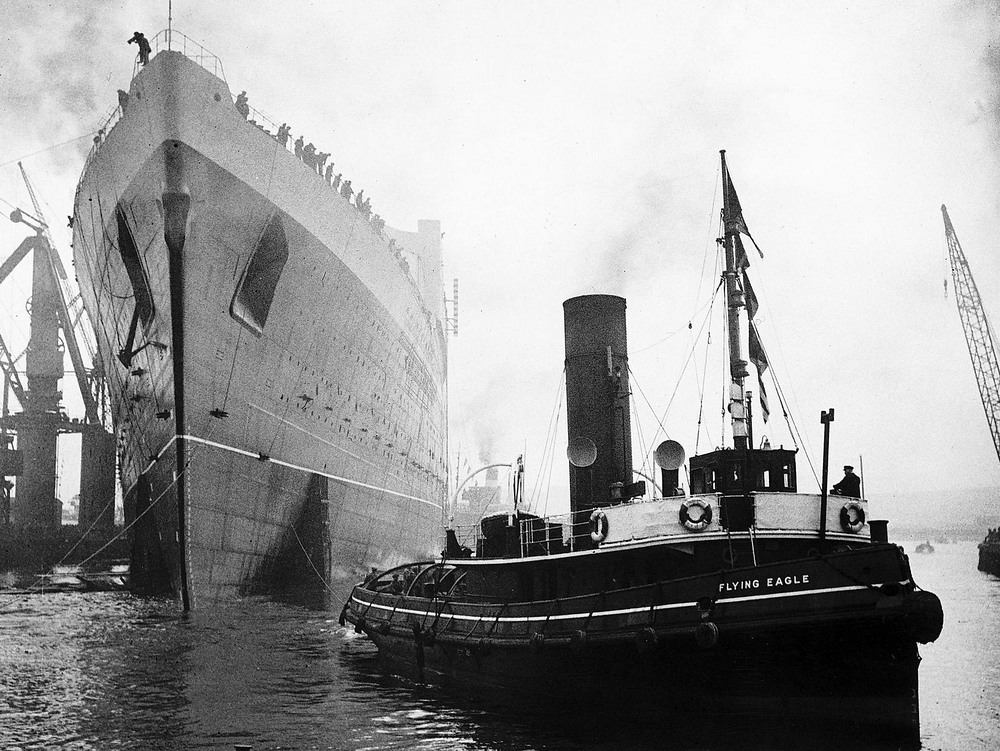
Queen Elizabeth launch on the river Clyde, pulled by tug The Flying Eagle in 1938. Photo credit: Glasgow Live
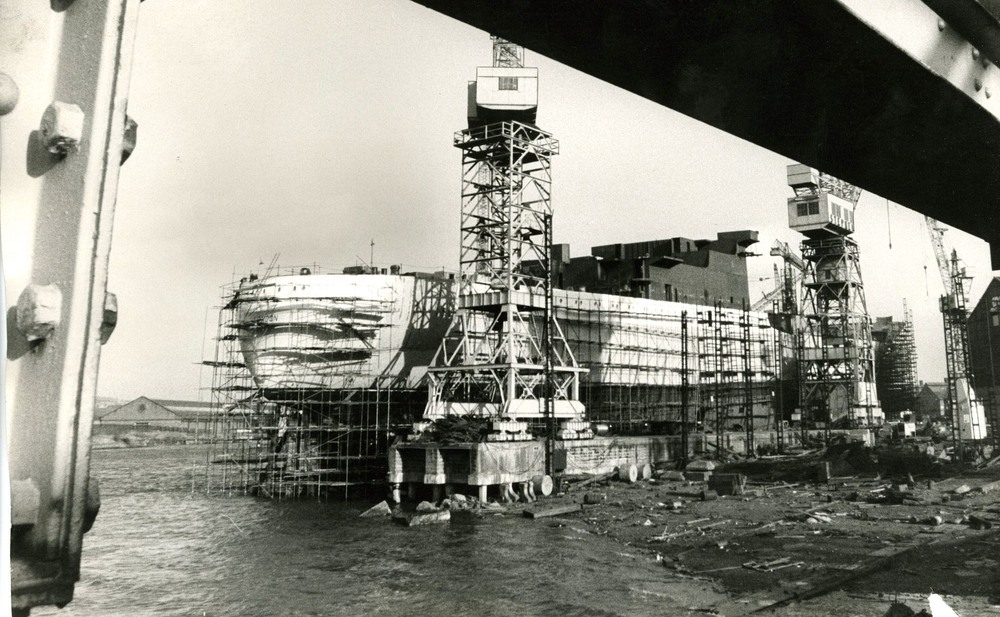
The Port Caroline ship being built at Stephen's of Linthouse yard on the Clyde in 1968. Photo credit: Glasgow Live
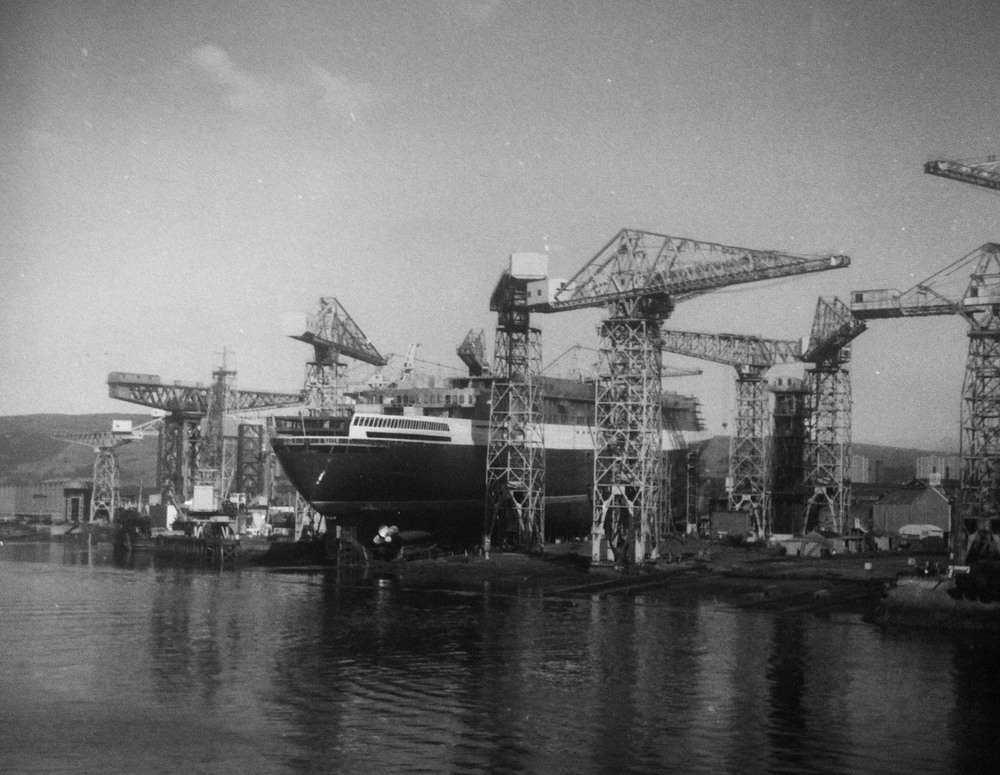
Photo credit: University of Glasgow Library
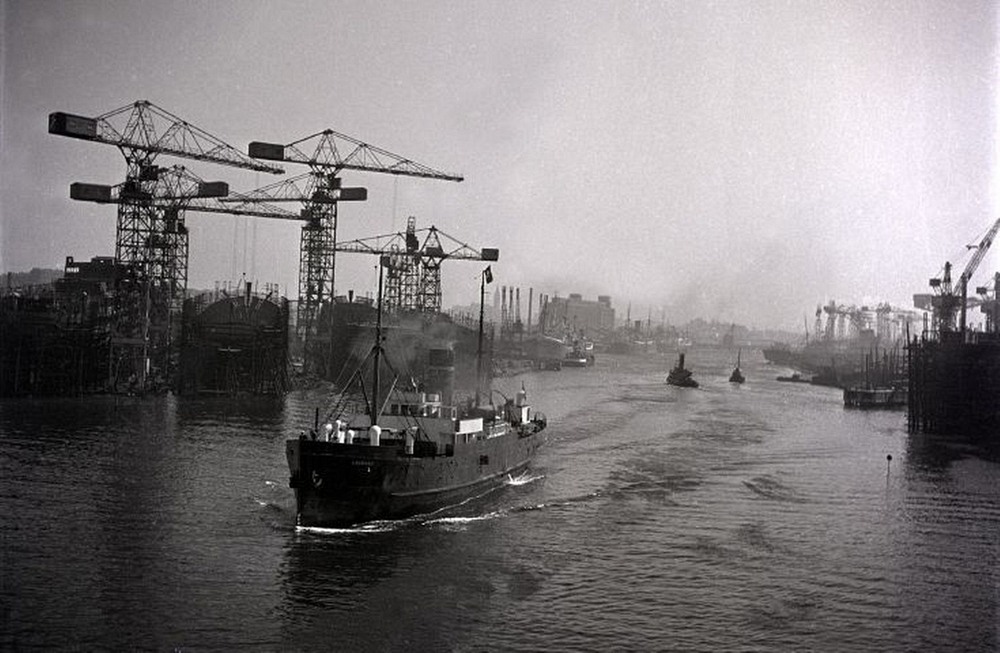
The River Clyde in the early 1900s. Photo credit: Glasgow Live
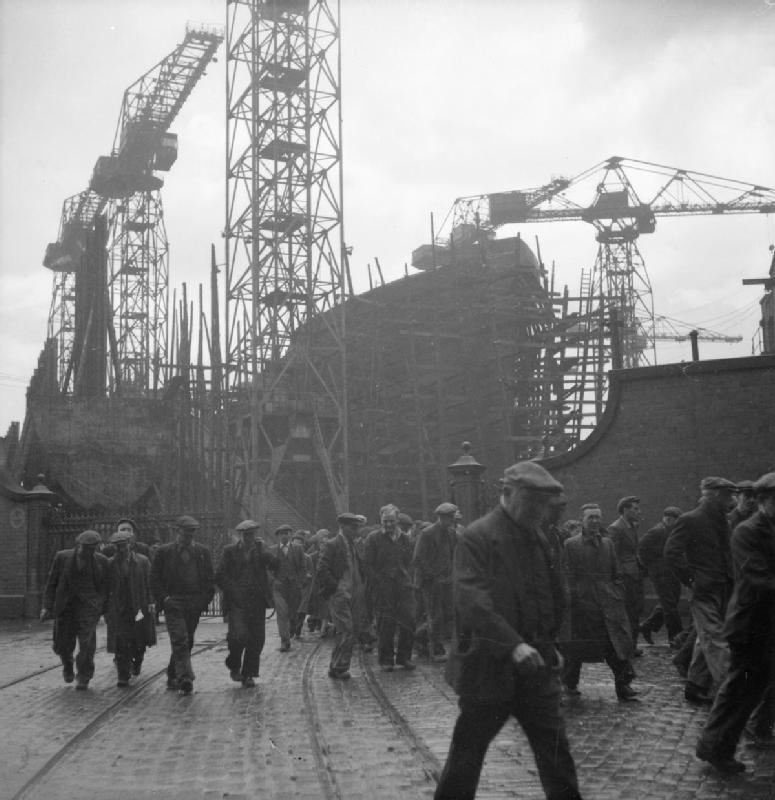
A Glasgow shipyard in 1944.
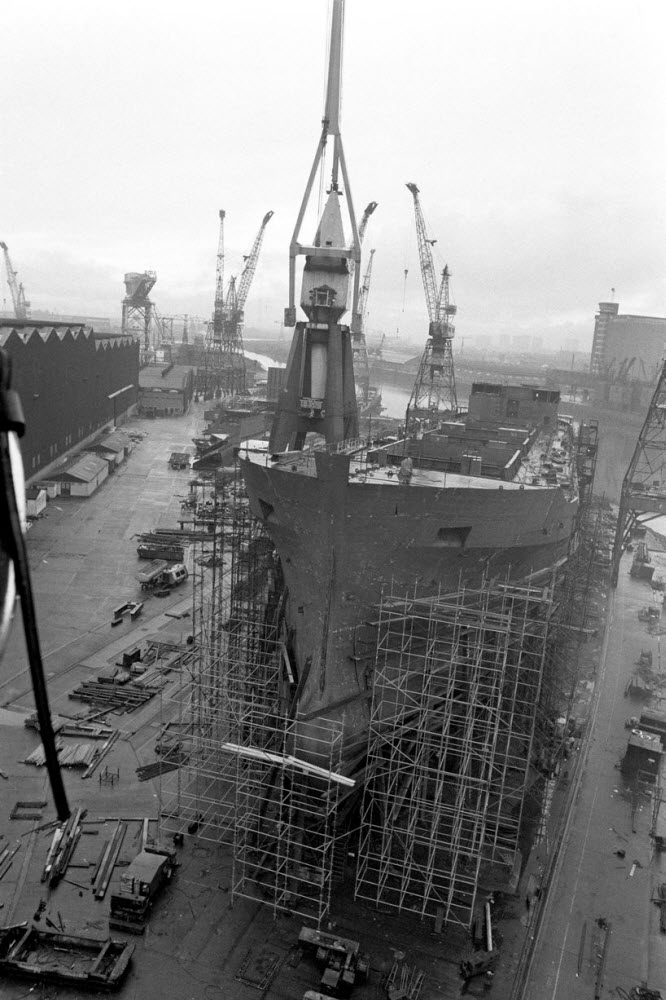
A work in progress at the Govan Yard in 1971. Photo credit: Glasgow Live



Comments
Post a Comment